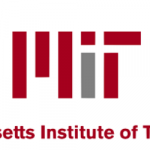Researchers develop new platform for customizable quantum devices

(HPCWire) Researchers at MIT, the University of Chicago and Columbia University, have demonstrated how a particular molecular family of qubits can be finely tuned over a broad spectrum, like turning a sensitive dial on a wideband radio.
The team also has outlined the underlying design features that enable exquisite control over these quantum bits.
“This is a new platform for qubit design. We can use our predictable, controllable, tunable design strategy to create a new quantum system,” said Danna Freedman, MIT professor of chemistry and a co-author of the study. “We’ve demonstrated the broad range of tunability over which these design principles work.”
The work is partially supported by Q-NEXT, a U.S. Department of Energy (DOE) National Quantum Information Science Research Center led by Argonne National Laboratory.
The researchers’ work focuses on a specific group of molecules: those with a central chromium atom surrounded by four hydrocarbon molecules to form a pyramid-like structure.
The qubit is the quantum equivalent of the traditional computing bit. Physically, it may take any of several forms, such as a specially prepared atom inside a crystal or an electrical circuit. It can also be a lab-made molecule.
One advantage of a molecular qubit is that, like a tiny 3D-printed gadget, it can be engineered from the bottom up, giving the scientist freedom to tune the qubit for different functions.
“We’re working to change the atomic structure through synthetic chemistry and then learning how those changes modify the physics of the qubit,” said Leah Weiss, a University of Chicago postdoctoral researcher and study co-author.
A molecular qubit’s information is stored in its spin, a property of atomic-level materials. Scientists engineer the spin by adjusting — tuning — the arrangement of the molecule’s electrons, its electronic structure. The information enters the qubit as particles of light, or photons, and is encoded in the qubit’s spin. The spin-encoded information is then translated again into photons, to be read out.
Different photon wavelengths are more suitable for different applications. One wavelength may work better for biosensing applications, another for quantum communication.
























